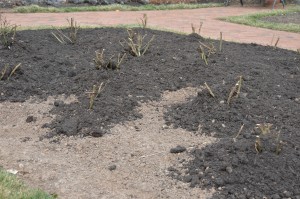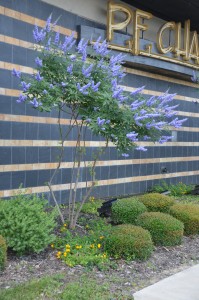Fall-planted perennials, shrubs and trees need some additional attention. Here are 10 basic tips to help plants get past potential winter woes:
- Select balled-and-burlapped (b&b) or container-grown plants rather than bare-rooted stock. Most bare-root plants are planted in late winter or early spring when plants are still dormant.
- Evergreens, particularly broad-leaved evergreens, are more susceptible to winter dryness because leaves lose more water than narrow-leaved evergreens and deciduous plants. Roots may not replace moisture loss in frozen ground.
- Don’t delay planting landscape plants you found on sale at local garden centers at deep discounted prices. Early fall planting ensures good root development.
- To Mulch or Not? A 2-4 inch layer of mulch can prevent wide soil temperature fluctuations. Do not mulch newly set fruit trees which may attract overwintering voles and rabbits that feed on their tender sugary bark.
- Plant ground covers and shallow-rooted shrubs earlier in fall to avoid heaving out of the ground by alternate freezing and thawing. A 2-4 inch layer of mulch by late November or early December to reduce wide soil temperature fluctuations.
- Particularly in northern areas, insulate rose crowns and roots with 4-6 inches of loose non-packing organic mulch such as straw or oak leaves.
- Plant bulbs when there is a chill in the air or after first killing frost. In southern areas (zones 6 – 8), garden centers are lowering prices in November to make room for winter holiday inventory.
- Cover the trunk of thin-barked young trees with paper wraps in late November to prevent winter frost cracks, sunscald, and deer and rodent damage; remove all wraps by early May.
- In most regions prune on the “downside” of winter in March and early April. Choose a comfortable day so to avoid mistakes made in a hurry. In zone 6 marginally hardy shrubs include roses, bigleaf hydrangeas (H. macrophylla), crape myrtles, and chaste trees (Vitex spp.).
- Don’t forget to move semi-tender plants in containers into an unheated garage or greenhouse for winter protection. Minimum day/night temperatures should not drop below 40 °F.



 Posted in
Posted in 
